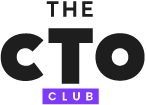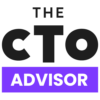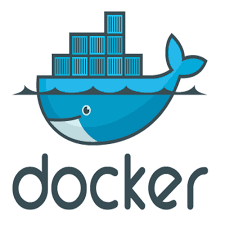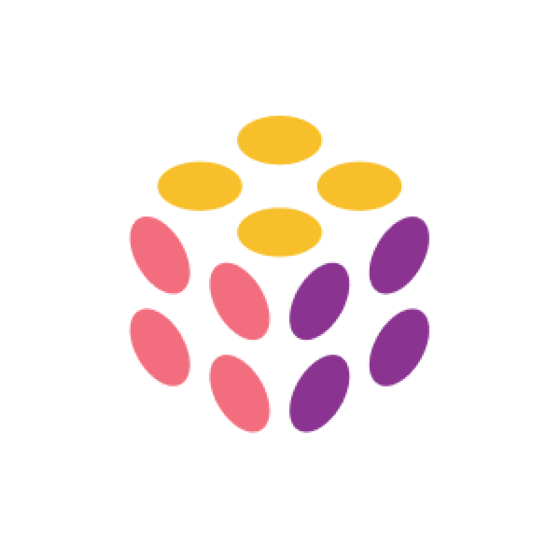Best Data Exchange Platform Shortlist
Here’s my shortlist of the best data exchange platforms:
Our one-on-one guidance will help you find the perfect fit.
Data exchange platforms help teams securely share, transform, and manage data across systems without getting stuck in manual file transfers or siloed tools.
Many teams look for these platforms when they’re frustrated by inconsistent formats, compliance risks, or collaboration breakdowns between departments. It can be hard to keep data accurate and protected when everyone is working with different processes or systems.
I’ve worked with teams who needed to modernize how they move and collaborate on data, helping them choose platforms that balance security, flexibility, and user experience. This guide is built on those experiences to help you find a solution that fits your data workflows and reduces the stress of data handoffs.
Why Trust Our Software Reviews
We’ve been testing and reviewing SaaS development software since 2023. As tech experts ourselves, we know how critical and difficult it is to make the right decision when selecting software. We invest in deep research to help our audience make better software purchasing decisions.
We’ve tested more than 2,000 tools for different SaaS development use cases and written over 1,000 comprehensive software reviews. Learn how we stay transparent & check out our software review methodology.
Best Data Exchange Platform Summary
This comparison chart summarizes pricing details for my top data exchange platform selections to help you find the best one for your budget and business needs.
| Tool | Best For | Trial Info | Price | ||
|---|---|---|---|---|---|
| 1 | Best for supply chain integration | Free demo available | Pricing upon request | Website | |
| 2 | Best for data onboarding | Free demo available | Pricing upon request | Website | |
| 3 | Best for cloud-native data sharing | Free demo available | Pricing upon request | Website | |
| 4 | Best for financial services | Free demo available | Pricing upon request | Website | |
| 5 | Best for AI-driven integration | Free demo available | Pricing upon request | Website | |
| 6 | Best for cloud-based data warehousing | Free trial + demo available | From $2/credit | Website | |
| 7 | Best for data synchronization | Free trial available | From €79/month (billed annually) | Website | |
| 8 | Best for B2B collaboration | Not available | Pricing upon request | Website | |
| 9 | Best for enterprise data integration | Free demo available | Pricing upon request | Website | |
| 10 | Best for Open‑Source Integration | Free trial + demo available | Pricing upon request | Website |
-

Docker
Visit WebsiteThis is an aggregated rating for this tool including ratings from Crozdesk users and ratings from other sites.4.6 -

Pulumi
Visit WebsiteThis is an aggregated rating for this tool including ratings from Crozdesk users and ratings from other sites.4.8 -

GitHub Actions
Visit Website
Best Data Exchange Platform Reviews
PartnerLinQ is a digital supply chain connectivity platform designed to improve collaboration and efficiency across industries like food and beverages, retail, and logistics. It offers solutions for network visualization, intelligent planning, and multi-enterprise collaboration to optimize supply chain operations.
Why I picked PartnerLinQ: It excels in supply chain integration, providing tools for network visualization that simplify management and offer insights. Intelligent planning and forecasting capabilities allow your team to adapt to market changes effectively.
Multi-enterprise collaboration features enable trusted connections among businesses. Additionally, PartnerLinQ delivers actionable insights, helping you make informed decisions.
Standout features & integrations:
Features include document management, which streamlines the handling of purchase orders and invoices. The platform offers reporting and analytics to analyze supply chain performance against KPIs. Scalability ensures that PartnerLinQ adapts to changing business demands, supporting growth and flexibility.
Integrations include SAP, Oracle, Microsoft Dynamics, Salesforce, IBM, Amazon Web Services, Google Cloud Platform, Netsuite, Infor, and QuickBooks.
Pros and cons
Pros:
- Advanced planning capabilities
- Supports multi-enterprise collaboration
- Provides timely decision-making insights
Cons:
- Limited offline functionality
- Dependency on internet connectivity
Flatfile is an AI-powered data preparation and migration platform designed for enterprises, primarily serving service teams and system integrators. It simplifies data mapping, cleaning, transforming, and validating, enhancing data migration and onboarding efficiency.
Why I picked Flatfile: Its user-friendly spreadsheet-like interface allows your team to navigate data tasks easily. AI-driven field mapping automates the organization of complex data sets, making onboarding smoother.
Customizable workspaces and collaboration tools ensure your team can work efficiently and securely. With a focus on data security and compliance, Flatfile is ideal for teams handling sensitive data.
Standout features & integrations:
Features include a spreadsheet-like interface that makes data tasks intuitive. The platform offers AI-driven field mapping to simplify complex data organization. Customizable workspaces and collaboration tools enhance team efficiency.
Integrations include NetSuite, Workday, Salesforce, HubSpot, Marketo, Oracle, Microsoft Dynamics, Google Cloud Platform, Amazon Web Services, and Slack.
Pros and cons
Pros:
- Simplifies data onboarding
- Strong data security measures
- Customizable workspaces
Cons:
- High learning curve for beginners
- Dependency on cloud connectivity
AWS Data Exchange is a cloud-based platform designed for businesses looking to efficiently find, subscribe to, and use third-party data in the cloud. It primarily serves data scientists, analysts, and IT professionals, facilitating easy access to a wide range of data sets.
Why I picked AWS Data Exchange: It provides a centralized marketplace for third-party data, simplifying the data acquisition process. The platform integrates seamlessly with other AWS services, enhancing your data workflows.
Automatic updates ensure your team always has access to the latest data sets. Its flexible subscription options allow you to choose data that fits your specific needs.
Standout features & integrations:
Features include a centralized marketplace that simplifies finding and subscribing to data. Automatic updates keep your data current without manual intervention. The platform offers flexible subscription options, allowing you to access only the data you need.
Integrations include Amazon S3, Amazon Redshift, AWS Glue, Amazon QuickSight, Amazon Athena, Amazon EMR, AWS Lambda, AWS Data Pipeline, Amazon SageMaker, and Amazon RDS.
Pros and cons
Pros:
- Centralized data marketplace
- Flexible subscription options
- Wide range of data sets
Cons:
- Requires AWS expertise
- Complex pricing structure
DemystData is an external data management platform tailored for financial institutions, focusing on efficient data workflows and compliance. It enables users to operationalize external data, adhering to regulations like SOC 2 Type II, GDPR, and CCPA.
Why I picked DemystData: It excels in managing external data for financial services, offering significant cost savings per deployment. The platform supports regulatory compliance, ensuring your data practices meet industry standards. It's designed to reduce time to success, making your data operations more efficient. With its focus on financial services, DemystData provides specialized solutions for complex data needs.
Standout features & integrations:
Features include robust compliance with global data regulations, ensuring your data practices align with industry standards. The platform offers customizable data workflows to fit your specific needs. It also provides detailed analytics to help you derive insights from your data.
Integrations include Salesforce, AWS, Microsoft Azure, Google Cloud, Snowflake, Tableau, Oracle, IBM, SAP, and Twilio.
Pros and cons
Pros:
- Strong regulatory compliance
- Efficient data workflows
- Reduces time to success
Cons:
- Limited to external data management
- Not suitable for small businesses
SnapLogic Integration Cloud is an intelligent integration platform designed for enterprises seeking to connect applications and data sources efficiently. It serves a diverse user base, from IT professionals to business analysts, offering tools for data integration and automation.
Why I picked SnapLogic Integration Cloud: The platform leverages AI for integration, making it highly adaptable to complex data environments. Its self-service capabilities allow your team to design and deploy integrations without heavy coding.
SnapLogic's visual interface simplifies the process, enhancing productivity. The platform's scalability ensures it can handle growing data needs, making it ideal for large enterprises.
Standout features & integrations:
Features include a visual drag-and-drop interface, which makes designing integrations straightforward. The platform offers real-time data processing, allowing you to access up-to-date information quickly. It also supports cloud and on-premises deployments, providing flexibility in how you manage your data.
Integrations include Salesforce, ServiceNow, Workday, SAP, Oracle, Microsoft Dynamics 365, Amazon Web Services, Google Cloud Platform, Tableau, and Slack.
Pros and cons
Pros:
- Visual interface for ease of use
- Scalable for large data demands
- Supports real-time data processing
Cons:
- High resource consumption
- Requires initial setup time
Snowflake is a cloud-based data warehousing platform designed for businesses that need scalable and flexible data storage solutions. It primarily serves data engineers, analysts, and IT professionals, offering powerful data management and analytics capabilities.
Why I picked Snowflake: It provides a unique architecture that separates storage and compute, allowing you to scale resources independently. This feature ensures efficient data processing and cost management.
Snowflake's data sharing capabilities make it easy to collaborate across different teams and organizations, enhancing productivity. Its marketplace offers a wide range of data sets and services that integrate seamlessly with your existing data ecosystem.
Standout features & integrations:
Features include automatic scaling of resources, which helps manage costs effectively. The platform's data sharing capabilities enable seamless collaboration between teams. Snowflake also offers a marketplace with diverse data sets and services, enhancing data analytics potential.
Integrations include Tableau, Looker, Power BI, Informatica, Talend, Alteryx, Microsoft Azure, Amazon Redshift, Google BigQuery, and Salesforce.
Pros and cons
Pros:
- Easy data sharing capabilities
- Automatic resource scaling
- Supports multi-cloud environments
Cons:
- Complex pricing structure
- Initial setup can be time-consuming
Weld is an ETL platform designed for businesses needing efficient data synchronization across a wide array of sources. It primarily serves data teams and analysts, offering tools for data extraction, transformation, and orchestration to facilitate seamless data workflows.
Why I picked Weld: It provides over 200 pre-built connectors, ensuring you can integrate data from numerous sources effortlessly. Its AI-driven data transformations optimize data management tasks, making your team's operations more efficient.
Weld's emphasis on security, including GDPR compliance, ensures your data remains protected. With a flat-rate pricing model, budgeting for data operations becomes predictable and straightforward.
Standout features & integrations:
Features include end-to-end encryption to secure your data throughout the process. The platform supports automated scheduling of syncs and dbt jobs, streamlining your data workflows. Additionally, Weld's AI-driven transformations enhance the efficiency of data handling.
Integrations include Shopify, Salesforce, Google Ads, Facebook Ads, Snowflake, HubSpot, Amazon Redshift, MySQL, PostgreSQL, and Microsoft Azure.
Pros and cons
Pros:
- Extensive pre-built connectors
- AI-driven data transformations
- Strong security measures
Cons:
- Initial setup complexity
- Not ideal for very small businesses
IBM® Sterling® Data Exchange is a business-to-business data exchange platform that caters to enterprises needing secure and reliable data sharing solutions. It focuses on improving partner collaboration and supply chain visibility through efficient data exchange processes.
Why I picked IBM® Sterling® Data Exchange: It offers a scalable architecture that supports high-volume data transfers, crucial for large enterprises. The platform's secure data exchange capabilities protect sensitive information during transactions.
Real-time visibility into data flows helps your team make informed decisions quickly. With its compliance features, IBM® Sterling® ensures your business meets industry regulations.
Standout features & integrations:
Features include advanced data encryption to safeguard your transactions. The platform offers real-time tracking of data exchanges, providing you with up-to-date insights. Additionally, its compliance management tools help ensure your operations adhere to industry standards.
Integrations include SAP, Oracle, Microsoft Dynamics, Salesforce, Amazon Web Services, Google Cloud Platform, IBM Cloud, Netsuite, Infor, and QuickBooks.
Pros and cons
Pros:
- High-volume data transfer support
- Secure data exchange capabilities
- Real-time data flow visibility
Cons:
- Complex initial setup
- Not ideal for small businesses
Informatica B2B Data Exchange is a secure platform for efficient data integration between business partners, mainly serving large enterprises. It provides advanced data transformation and flexible partner management to enhance data exchange processes.
Why I picked Informatica B2B Data Exchange: It offers advanced data transformation, making it ideal for complex enterprise needs. Flexible partner management allows you to onboard partners quickly, which is crucial for large-scale operations.
The platform includes business activity monitoring to ensure data quality. Additionally, it provides add-on solutions like managed file transfer and EDI gateways, aligning with enterprise integration demands.
Standout features & integrations:
Features include comprehensive business activity monitoring to track data exchanges effectively. It also provides advanced data transformation capabilities to handle complex data formats. Flexible partner management helps you onboard new partners with ease, ensuring smooth data integration.
Integrations include SAP, Oracle, IBM, Microsoft, Salesforce, Amazon Web Services, Google Cloud Platform, Workday, ServiceNow, and Tableau.
Pros and cons
Pros:
- Advanced data transformation
- Flexible partner management
- Business activity monitoring
Cons:
- Steep learning curve
- Limited small business suitability
Talend Data Fabric is a modular data management platform that helps organizations collect, clean, govern, and deliver data across on-premises and cloud environments. It’s built for teams working on data pipelines, quality, and oversight, providing tools that support analytics, compliance, and app delivery.
Why I picked Talend Data Fabric: You can use drag‑and‑drop tools to unify data from different sources, then validate and clean it in real time with data quality components. Its Talend Trust Score gives you a clear signal of data health at a glance, so your team can trust what you're using.
It also includes API and application integration, making it simpler to share data internally or externally. The platform supports deploying jobs wherever you need—whether in the cloud or on‑premises—so you’ve got flexibility.
Standout features & integrations:
Features include low‑code pipeline design with visual job and route builders that support batch or real‑time jobs. It includes data profiling, anonymization, and dynamic schema mapping. You also get embedded data stewardship tools so your team can review and manage data quality and lineage.
Integrations include AWS, Microsoft Azure, Google Cloud Platform, Snowflake, Databricks, Cloudera, Salesforce, SAP, and Apache Iceberg.
Pros and cons
Pros:
- Open‑source core reduces license cost
- Flexible deployment across cloud or on‑premises
- Trust score gives clear data health insights
Cons:
- Requires technical knowledge to configure pipelines
- Designer can slow down with large jobs
Other Data Exchange Platform
Here are some additional data exchange platform options that didn’t make it onto my shortlist, but are still worth checking out:
- Digi.Me
For data privacy
- Openprise Data Marketplace
For marketing operations
- Nuvo
For real-time data validation
- Mobito
For mobility data solutions
- Oracle Data Marketplace (BlueKai)
For third-party data access
- Eyeota Data Marketplace
For audience targeting
- Informatica Intelligent Data Integration Cloud
For cloud data integration
- Boomi Master Data Hub
For master data management
- Tray.io
For low-code automation
- Open:FactSet Marketplace
For financial data analytics
- Explorium
For automated data enrichment
- OneSchema
For spreadsheet data imports
- dataimporter.io
For CSV data imports
- MuleSoft Anypoint Platform
For API-led connectivity
Data Exchange Platform Selection Criteria
When selecting the best data exchange platform to include in this list, I considered common buyer needs and pain points like data privacy concerns and integration capabilities. I also used the following framework to keep my evaluation structured and fair:
Core Functionality (25% of total score)
To be considered for inclusion in this list, each solution had to fulfill these common use cases:
- Facilitate secure data transfer
- Support multiple data formats
- Enable real-time data sharing
- Provide data transformation tools
- Ensure data privacy compliance
Additional Standout Features (25% of total score)
To help further narrow down the competition, I also looked for unique features, such as:
- Customizable data workflows
- AI-driven data insights
- Advanced data encryption
- Integration with IoT devices
- Automated data cleansing
Usability (10% of total score)
To get a sense of the usability of each system, I considered the following:
- Intuitive user interface
- Easy navigation
- Minimal learning curve
- Responsive design
- Clear documentation
Onboarding (10% of total score)
To evaluate the onboarding experience for each platform, I considered the following:
- Availability of training videos
- Interactive product tours
- Access to webinars
- Use of chatbots for guidance
- Pre-built templates
Customer Support (10% of total score)
To assess each software provider’s customer support services, I considered the following:
- 24/7 support availability
- Access to a knowledge base
- Live chat options
- Dedicated account managers
- Response time to queries
Value For Money (10% of total score)
To evaluate the value for money of each platform, I considered the following:
- Competitive pricing
- Flexible subscription plans
- Scalability of features
- Cost of add-ons
- Discount options for long-term contracts
Customer Reviews (10% of total score)
To get a sense of overall customer satisfaction, I considered the following when reading customer reviews:
- Overall satisfaction ratings
- Commonly mentioned pros and cons
- Feedback on ease of use
- Comments on reliability
- User recommendations
How to Choose a Data Exchange Platform
It’s easy to get bogged down in long feature lists and complex pricing structures. To help you stay focused as you work through your unique software selection process, here’s a checklist of factors to keep in mind:
| Factor | What to Consider |
| Scalability | Can the platform grow with your data needs? Check if it supports increasing data volumes without performance issues. |
| Integrations | Does it connect easily with your existing tools? Look for compatibility with your current software stack to avoid costly workarounds. |
| Customizability | Can you tailor it to fit your workflows? Consider if the platform allows for customization to match your team's unique processes. |
| Ease of use | Is the interface intuitive for your team? Ensure the platform is user-friendly to minimize training time and increase adoption. |
| Implementation and onboarding | How long willthe setup take? Assess the time and resources needed to get up and running, including training and data migration support. |
| Cost | Does it fit your budget? Compare pricing models, including hidden fees or additional costs for upgrades and support. |
| Security safeguards | How does it protect your data? Evaluate encryption standards, access controls, and compliance with industry security protocols. |
| Compliance requirements | Does it meet industry standards? Ensure the platform complies with regulations relevant to your business, like GDPR or HIPAA, to avoid legal issues. |
What Is a Data Exchange Platform?
A data exchange platform is a solution that facilitates the secure and efficient transfer of data between systems or organizations. These tools are generally used by IT professionals, data analysts, and business managers to improve data collaboration and accessibility.
Features like real-time data sharing, integration capabilities, and security safeguards support efficient data management and compliance. Overall, these platforms enhance data-driven decision-making and operational efficiency.
Features of Data Exchange Platform
When selecting a data exchange platform, keep an eye out for the following key features:
- Real-time data sharing: Enables instant data updates across systems, improving collaboration and decision-making.
- Integration capabilities: Connects with existing tools and software, ensuring smooth data flow and reducing manual work.
- Security safeguards: Protect sensitive information through encryption and access controls, maintaining data privacy.
- Data transformation tools: Allow for the conversion of data into different formats, ensuring compatibility and usability.
- Compliance management: Ensures adherence to industry regulations like GDPR or HIPAA, avoiding legal issues.
- Customizable workflows: Adapts to specific business processes, enhancing operational efficiency.
- Automated data cleansing: Identifies and corrects data errors, improving data quality and reliability.
- Scalable architecture: Supports growth by handling increasing data volumes without performance loss.
- User-friendly interface: Simplifies navigation and reduces training time, increasing user adoption.
- Marketplace access: Provides a variety of data sets and services, enriching data analytics potential.
Benefits of Data Exchange Platform
Implementing a data exchange platform provides several benefits for your team and your business. Here are a few you can look forward to:
- Improved collaboration: Real-time data sharing helps teams work together more effectively by providing instant access to the latest information.
- Enhanced data security: Built-in security safeguards protect sensitive data, reducing the risk of breaches and maintaining confidentiality.
- Increased operational efficiency: Customizable workflows and automated processes reduce manual tasks, saving time and resources.
- Better decision-making: Access to diverse data sets and integration capabilities provides comprehensive insights for informed decisions.
- Regulatory compliance: Compliance management features ensure your data practices meet industry standards, avoiding legal complications.
- Scalability: A scalable architecture allows your business to grow without worrying about data handling limitations.
- Higher data quality: Automated data cleansing improves accuracy and reliability, leading to more trustworthy analytics.
Costs and Pricing of a Data Exchange Platform
Selecting a data exchange platform requires an understanding of the various pricing models and plans available. Costs vary based on features, team size, add-ons, and more. The table below summarizes common plans, their average prices, and typical features included in data exchange platform solutions:
Plan Comparison Table for Data Exchange Platform
| Plan Type | Average Price | Common Features |
| Free Plan | $0 | Basic data sharing, limited integrations, and community support. |
| Personal Plan | $5-$25 /user /month | Enhanced data privacy, basic analytics, and email support. |
| Business Plan | $30-$75 /user /month | Advanced integrations, automated data cleansing, and priority support. |
| Enterprise Plan | $100-$200 /user /month | Customizable workflows, compliance management, a dedicated account manager, and comprehensive analytics. |
Data Exchange Platform FAQs
Here are some answers to common questions about data exchange platforms:
How do data exchange platforms ensure data security?
Data exchange platforms use encryption, access controls, and compliance with industry standards to protect your data. They often include features like end-to-end encryption and user authentication to ensure only authorized users can access sensitive information. Make sure the platform aligns with your organization’s security protocols.
Can I integrate my current tools with a data exchange platform?
Yes, most data exchange platforms offer integration capabilities with popular tools and software. Before selecting a platform, verify that it supports the systems you currently use. This ensures smooth data flow and reduces manual work, enhancing overall efficiency and productivity for your team.
How do data exchange platforms handle compliance with regulations?
Data exchange platforms often come with compliance management features to help you meet industry regulations like GDPR or HIPAA. They provide tools for auditing, reporting, and managing data privacy settings. It’s important to ensure the platform you choose aligns with your specific compliance needs.
What should I consider about pricing models for data exchange platforms?
Pricing models vary and can include factors like user count, feature access, and data volume. Consider your team’s size and the specific features you need. Look for transparent pricing structures to avoid hidden costs, and compare different plans to find the best value for your budget.
How do I assess the scalability of a data exchange platform?
Scalability is crucial if your data needs are expected to grow. Check if the platform can handle increasing data volumes and user numbers without performance issues. Consider platforms with flexible resource allocation to ensure they can adapt to your business’s evolving requirements.
What support options are available for data exchange platforms?
Support options can include 24/7 customer service, online resources, and dedicated account managers. Evaluate the level of support you might need based on your team’s technical expertise. Ensure the platform provides timely and effective assistance to address any issues that may arise.
What's Next?
Boost your SaaS growth and leadership skills. Subscribe to our newsletter for the latest insights from CTOs and aspiring tech leaders. We'll help you scale smarter and lead stronger with guides, resources, and strategies from top experts!
























